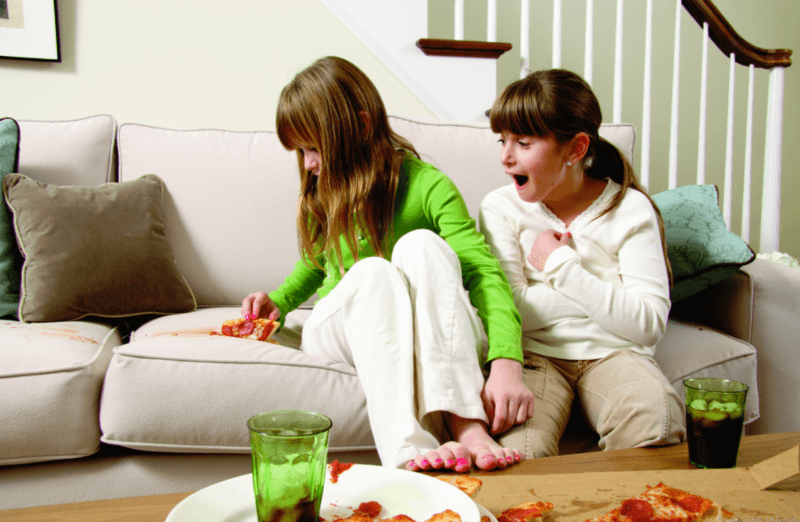
Image Source: Ahigo.net
Because interior design and decorating are now more playful and casual we will finally see joyful, bright and pastel paint colors that are not designed for a nursery.
Stark white and gloomy gray interiors are giving way to more colorful alternatives. We want to have more fun, and the tantalizing colors of ice-cream are seducing us, especially when they appear less and less on our plates (sigh). This makes sense. If I can’t have my ice-cream because of the calories and sugar, I might as well splash some ice-creamy paint color on the walls without feeling guilty.
If you are wondering how long this trend will stay, I’d say long enough to become classics.
Color Blocking with Pastel Paint Colors
If you don’t feel like painting the whole room, consider color blocking or accent paint. It is one of the quickest ways to use pastel paint colors to bring in enough softness and charm.

Several pastel paint colors combined with natural blond wood and light color surface materials create a welcoming and fresh vibe.


Paint the doors soft blush paint color to create an unexpected effect. Blend in off-whites and soft grays combined with natural textures.

Since a rental home might not allow for using pastel paint color (or any color for that matter), try to be creative. For example, you can paint an inepensive shelving that will bring your room to life.
Sage, Mint and Blue

Paint the walls soft blush, a pastel color that works beautifully with sage- green. Add an earthy ambiance with brown and cinamon colors. Blend in off- white and dusty gray in accents for an organic look.
Pale Blue and Teal with Natural Elements

Pale blue paint color graduated from the nurseries into the dining rooms and the living rooms. Use it in the context of classic architecture with vintage furniture and it will aquire sophisticated qualities. Add a quirky wall art piece to spark a dinner conversation and surprise your guests. It’s better to be eccentric than boring.
Image Source: ApartmentTherapy.com
If you have a gallery wall make the wall color a part of the display. For example, if your wall art dominant color is green pick the shade of green from the images. If you go darker with the wall paint color, the artwork will pop, if you go lighter, the pictures will blend with the wall color creating unity.
What is your favorite pastel paint color? If you are not sure, keep your eyes open for a program that I’m offering in October “Step-by-Step Decorating Basics.”
Hope to see you there!




I’m a huge fan of pastel tones. They make every space more inviting and elegant. As far as I’m concerned, pastels are one of those timeless styles you can play and experiment with in every room. Thank you for this blog post, it’s really insightful!
Thank you, Katarina